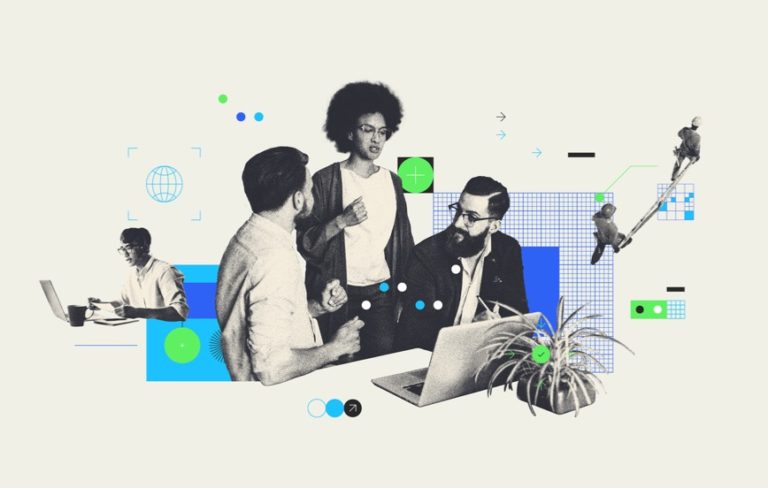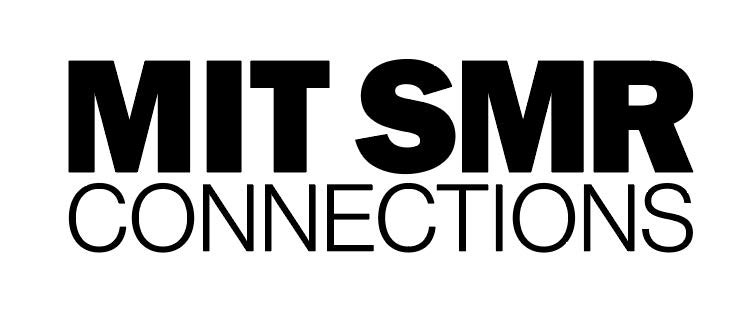We still do not live in an Age where Equality, Diversity and Inclusion (EDI) is by default. Instead, bias and discrimination are part of the everyday. Moreover, inequality in income and wealth, which transfers into inequality in opportunity, is rising according to the 2019 UN Global Sustainable Development Report.
Sadly, EDI manifests not just in what we see, hear and experience, but also in the judgments made against us. Moreover, this is not confined to the people who are responsible for creating negative experiences. Artificial Intelligence (AI) has highlighted a new form of bias, which discriminates against minorities such as court decisions or misrecognition due to gender, race, ethnicity and more. However, it is not just AI that is problematic, but potentially all forms of technology, whereby its design prevents or inhibits use. For example, tools designed only for right-handed people, clothing that is not large enough, or access not catering for the disabled.
Whilst this has implications for our every day, it becomes an issue in the workplace, a place where it might be expected that people are treated fairly, with respect and dignity and have a sense of belonging. After all, did these not underpin the guiding principles of early industrialists such as Robert Owen at New Lanark, Scotland and George Cadbury at Bournville, England? EDI is not a new concept. Moreover, EDI is not just a moral imperative but is also an economic and legal imperative. Sadly, it’s not happening.
What do we mean by Equality, Diversity and Inclusion?
To understand how to translate this imperative into actions then the starting point is to establish what we mean by EDI. One set of definitions grounded in the Oxford English Dictionary are:
- Equality: is our right to be respected, be treated fairly and have equal opportunity, irrespective of who we are.
- Diversity: acknowledges that people are different, both visibly and invisibly, recognizes the variety in these differences, and both values and respects these differences. Examples are age, religion, sexual orientation, neurodiversity, disabilities, ethnicity, geographical location and marital status.
- Inclusion: requires that whatever the differences, everyone ought to feel that they are safe and belong, being ’included’ is not enough.
In sum, EDI recognizes variety, creates a sense of belonging and treats everyone in the same way and with respect for their human rights and respect for themselves for their individuality. This focuses attention on the organization’s commitment to protecting every person’s well-being. Indeed, research indicates that a more diverse workforce can lead to improved decision-making, quality of work and team satisfaction,
However, differences in how people view and experience the world can cause discomfort to others, exacerbated by poor-quality communication that creates misunderstanding. At worst, is the emergence of frustration, fear, distrust, conflict and hostility. This could lead to the excuse that it is easier to work with people ‘like ourselves’. This raises the challenge of how these issues can be overcome or better, prevented
The big challenge is to make EDI part of the everyday.
The Quality Analogy
In the same sense that quality is intangible in what it is, but is both a strategic and operational requirement for businesses to survive, EDI is equally intangible and also ought to be a strategic and operational requirement. As such, we can learn from the quality domain about how to handle EDI and how organizations embed quality into their everyday.
Quality translates into organizational guiding principles such as ‘doing it right the first time’ and ‘continuous improvement’, this manifesting in management systems that are conducive to empowering everyone within the organization to take responsibility for the quality of what they do. This requires leadership, commitment, planning, coordination and control. This moves beyond mere ‘compliance to standards’ to strategies that aim to improve capability and enhance the quality of offerings. Underpinning this is a shared understanding of quality and the skill to make quality happen, which is achieved through education to develop knowledge and understanding and training to develop skills.
Re-stated, EDI translates into organizational guiding principles such as ‘belonging’, ‘respect’, ‘fairness’, ‘trust’ and ‘valued’, this manifesting in management systems that are conducive for empowering everyone within the organization to take responsibility for making EDI a reality. This requires leadership, commitment, planning, coordination and control. This moves beyond mere ‘compliance to standards’ to strategies that aim to improve capability and enhance EDI. Underpinning this is a shared understanding of EDI and the skill to make EDI happen, which is achieved through education to develop knowledge and understanding and training to develop skills.
An EDI framework
A more systematic unpacking of this reveals that, as suggested by the way we handle quality in organizations, there are multiple aspects to EDI:
- Legislation: a basic level of compliance and governance
- Principles: values that guide the organization and its efforts
- Strategy: intention and plan for making it happen
- Implementation: making it happen
- Outcome: well-being and organizational performance goals
- Metrics: measuring change and progress against goals
- Technology: enabling implementation, outcome and metrics
A basic level of observance is denoted by legislation, for example, as captured in the law, like United Kingdom’s obligations on Human Rights and Equality Act 2010. Underpinning this is the expectation that compliance will aim to eradicate discrimination, promote opportunity and create a sense of belonging, using such mechanisms as assessment and reports. However, this invokes a passive responsive approach, without commitment and perhaps a lack of concern about sanctions or penalties. A more proactive approach may translate the requisite legislation into a form that is understood by all within the organization.
However, a higher level of commitment can be expected with the view that sanctions or penalties are not acceptable, for the reason that these compromise the organization’s principles and values. This proactive approach manifests in an EDI strategy that integrates EDI into policies, roles and practices and promotes a culture conducive to, not only supporting but enabling everyone to fulfill their aspirations and potential. It applies to every point in the recruitment to the retirement lifespan of the employee. No one ought to be left behind. Targets for specific points in time are transparent in terms of what is achieved and how.
This leads to the challenge of making EDI happen, in other words, implementation. This aims to get buy-in from everyone in the organization. If people do not understand their prejudices and practices, then they need to become aware of them, informed about their impact and convinced that they ought to change. The aim is to change the mindset to one of genuine belief in EDI, not rhetorical compliance, and to embed this mindset into the culture of the organization as a way of life. This transformation from exclusion to inclusion involves education, but not indoctrination. Education helps people to understand, appreciate and accommodate differences, in particular, how to mutually find and build on the strengths of each other. In contrast, training courses may allow organizations to claim they are doing something, but the effectiveness of training courses can be questioned, with limited change in mindset.
The outcome ought to be an improvement in a person’s well-being and also an improvement in organizational performance. Moreover, Diversity allows different views to emerge, which ought to lead to creativity. Indeed, studies, summarised by Korn & Ferry, reveal that well-managed approaches to Diversity and Inclusion, whilst may have challenges in the early stages as people adjust to differences, leads to greater individual, team and organizational performance in terms of innovation, time to market, new markets and profitability. For the person, it is reasonable to expect that a feeling of belonging and being valued leads to better performance. To feel excluded and undervalued leads to demotivation, possible (mental) health issues, and performance deterioration. This suggests that there is a need for the voice of those affected to be heard.
Moreover, Korn & Ferry explain that this has implications for leadership styles, substituting command and control approaches with collaborative and facilitative approaches. This supports my deeply held view that effective leadership is all about creating the conditions for everyone to participate, flourish and succeed, irrespective of who they are.
Whilst the aforementioned focus is on creating a fully accommodating EDI organization, then to know whether there has been an improvement from any change-related activities, it is necessary to establish the current situation using appropriate metrics and then use these to evaluate the impact of these activities. For example, BCG have identified Recruitment, Retention, Advancement, Representation and Pay as appropriate areas for measurement. This, if well designed, will enhance transparency as well as provide sound evidence of the effectiveness of any programs to embed EDI as an integral part of the organization’s way of doing things – its culture.
The remaining topic is technology.
The Role of Technology & EDI
Since technology, defined as artifacts and associated knowledge and practices, can enhance human capability, then it clearly has a role to support EDI. Whilst Human Resources Management (HRM) software supports how people are managed for their duration of employment, developments in data analytics and Artificial Intelligence (AI) have transformed our ability to make sense of our workplace engagement at all stages of our recruitment to retirement lifespan, as illustrated in the World Economic Forum’s 2020 EDI Toolkit.
Since the aim of recruitment is to find the best talent, then AI solutions offer the potential to help overcome the challenges that include avoiding bias in job advertisements, reaching out to diverse pools of talent and more effectively evaluating large volumes of applications, identifying especially that latent talent that has not had the opportunity to prove themselves.
Then, once recruited, there is the management of the recruitment to retirement lifespan of all organizational members. AI-empowered organizational analysis can help understand such issues as organizational composition, how people are performing, pay grade equity, career progression, compliance, legislation and cross-industry benchmarking. For example, the inclusivity and diversity of organizational relationships can be evaluated using organizational network analysis (ONS) using surveys to reveal such issues as who is involved in decision-making or innovation. ONS analysis of electronic communications (e.g. emails) can reveal collaborations and silos. Feedback about employee experiences and concerns can identify where attention is needed. The analysis of performance evaluations can reveal such issues as biased language and inconsistent ratings. Recommendations can help employees seek out better opportunities, more aligned with their interests and skills. Indeed, there appears to be much promise for AI-empowered technology to support EDI in many ways.
However, there is also concern that these AI-empowered applications have embedded biases that undermine EDI and exacerbate bias, as illustrated by untested and unregulated AI-empowered recruitment tools. This suggests caution about the use of AI-empowered tools and invites the question of what form of regulation and standards should be introduced to provide assurance that EDI objectives are being achieved rather than, unknowingly, being undermined.
So where does this leave us?
Equality, Diversity and Inclusion should not be negotiable. Indeed, it is a legal, economic and moral imperative. However, EDI is not a tick-box exercise to establish quotas. It is all about creating the organizational conditions conducive for people to participate, flourish and succeed. Its focus is individual well-being. It is a cultural feature of the organization, embedded deeply into the way things are done.
However, there is an argument that EDI programs have failed. The problem lies with the benchmark which reflects ‘white heteronormative values’. Instead, Belonging, Dignity and Justice are proposed and can be viewed as outcomes of a successful EDI program. If we reflect upon the previously mentioned definitions, Equality implies fairness and hence justice. Diversity values and respects the individual and by default the person’s dignity. Inclusion is all about feeling safe and belonging.
Perhaps the issue is the narrative that people use to promote and pursue EDI. EDI are ideals, but the words themselves are distant from the way we each feel about our situation. If the aim is to protect and develop everyone’s well-being, then EDI translates into a sense of belonging and a feeling of worth and fair treatment. This requires that the organizational cultural conditions are conducive to supporting this, manifesting in appropriate policies and practices. Technology, especially AI, should enhance this capability, offering the potential for personalized positive EDI experiences. Add to this authentic leadership with passion and commitment, then I would argue Equality, Diversity and Inclusion can be achieved.




